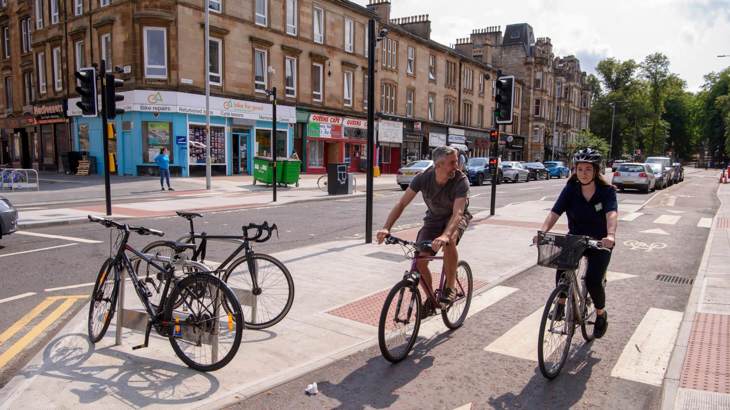The Government's Cycling and Walking Investment Strategy has incredible potential, but what will it take to achieve the returns? In February 2016 the Government began a consultation on their Cycling and Walking Investment Strategy (CWIS). This strategy laid out an ambition that by 2040 walking and cycling should be a normal part of everyday life and the natural choice for shorter journeys such as going to school, college or work, travelling to the station or for simple enjoyment.

The Government’s Cycling and Walking Investment Strategy includes a target to double cycling activity by 2025. Achieving the targets set out in the Government’s Cycling and Walking Investment Strategy would generate benefits of £61 billion.
We have modelled the levels of investment required to achieve this target. Our model uses the outcomes achieved by previous public investment in cycling programmes to predict the levels of investment required to deliver the scale of change envisaged by the Government target.
Cycling activity is measured as the estimated total number of 'journey stages’ made by bicycle each year. A ‘stage’ is a part of a journey, a new stage starts when you use a different mode of transport (e.g. cycling to a railway station to catch the train to work) or break your journey at a destination (e.g. dropping the kids at school before continuing on to work would constitute two stages).
Currently there are 0.8 billion stages made by bicycle (NTS 2013). The Cycling and Walking Investment Strategy requires that this rises to 1.6 billion stages by 2025.
What our modelling shows
- Meeting the target levels of cycling by 2025 requires an additional 553 million cycle stages per year in England outside of London.
- Meeting this target will require investment of around £8.2 billion.
- This level of investment is equivalent of £17 per person per year.
- This investment would provide for the development of 34,000 kilometres of new routes, engagement with nine million households and 21,000 schools.
- The investment programme will result in an estimated £61 billion of economic benefits from the impact on cyclists and the indirect impact of improved connectivity for pedestrians.
- This level of investment would result in an overall benefit to cost ratio of nearly eight to one, a return that represents excellent value for money.
The approach we've taken to this modelling exercise
- To estimate the scale of change needed to achieve a given level of cycling activity in England (outside London). The model assumes that targets for London will be achieved and we do not attempt to model investment in London separately.
- To collate available cost and impact data for various different programmes designed to increase cycling activity. We hold huge data resources on the effectiveness of a very wide range of different types of intervention that support walking and cycling in different ways. We synthesise this material to enable the model to produce different investment scenarios.
- In the case of CWIS we generate a scenario where the targets are achieved through investment in a wide palette of intervention types and estimate the cost of delivering this scenario.
So what does this tell us?
The investment required is not trivial. But it is not disproportionate to investment in other transport programmes either.
Construction of HS2 will cost in excess of £30 billion, the Roads Investment Strategy is £15 billion over five years.
And the rewards will be immense, both in economic terms (within and beyond the bounds of transport appraisal – the figures given here are all within framework) and in terms of benefits to community and society (e.g. health and wellbeing, connectedness, liveability, etc).
Our major concern about the Cycling and Walking Investment Strategy is that it provides no clarity on either the extent of intended investment in walking and cycling or where any resourcing for investment might come from.

